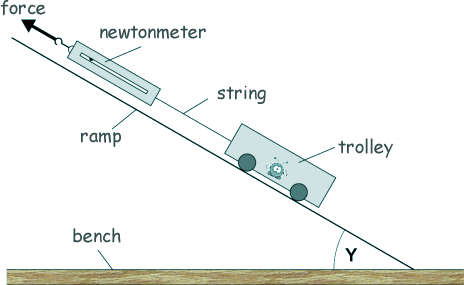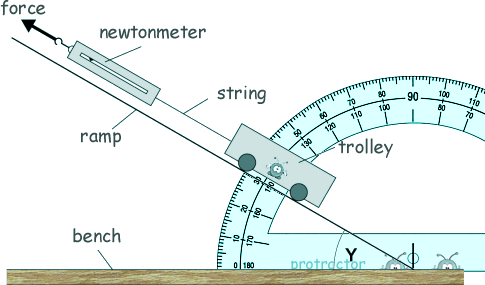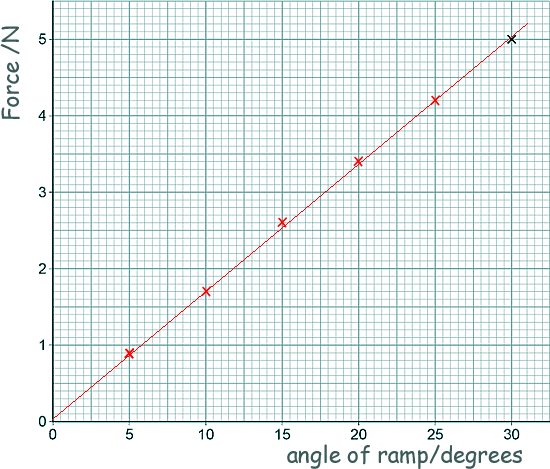GCSE Questions: Forces
Q28. Martha investigated how the angle of a ramp affects the force required to hold a trolley stationary on the ramp.
This is the equipment she used:

(i) Measure the angle Y in the diagram.

30o 
[1 mark]
Here is the newtonmeter before the investigation started.

(ii) What type of error is shown on the newtonmeter? A zero error 
[1 mark]
(iii) The error was not noticed until after the readings had been taken. Rather than reset the newton meter and repeating the whole experiment again, explain how this error be corrected for after the measurements have been taken.
All of the readings taken will be too great by 0.5N.
You therefore have to subtract 0.5 N from each reading. 
[1 mark]
Here are Martha's corrected results for the experiment:
Angle of ramp (in degrees) |
Force /N |
5 |
0.9 |
10 |
1.7 |
15 |
2.6 |
20 |
3.4 |
25 |
4.2 |
30 |
5.0 |
And here is an incomplete graph of her results:

(iv) Plot the missing results from her onto the graph and draw a line of best fit.
Plotting the points: 

To get 2 marks you had to plot 5 points correctly.
To get 1 mark at keast two had to be correct.
The examiners allowed the points to be within ± half a square.
The line of best fit  had to be a straight line through the points - not 'dot to dot' joining of the points.
had to be a straight line through the points - not 'dot to dot' joining of the points.
[3 marks]
(b) The diagram shows a person in a wheelchair using two different ramps to enter a van.

The ramps are at different angles to the ground.
(i) Explain one advantage of using the long ramp compared with using the short ramp.
The long ramp makes a smaller angle with the horizontal,  so less force is needed
so less force is needed  (to hold the wheelchair stationary on the ramp).
(to hold the wheelchair stationary on the ramp).
[2 marks]
A force of 160 N is needed to move the wheelchair up the long ramp. The ramp is 2.5 m long.
(ii) Calculate the work done to move the wheelchair up the ramp.
Work done = force x distance moved in the direction of the force 
W = Fs
W = 160 x 2.5 
W = 400  J
J 
[4 marks]
[12 Marks TOTAL]











